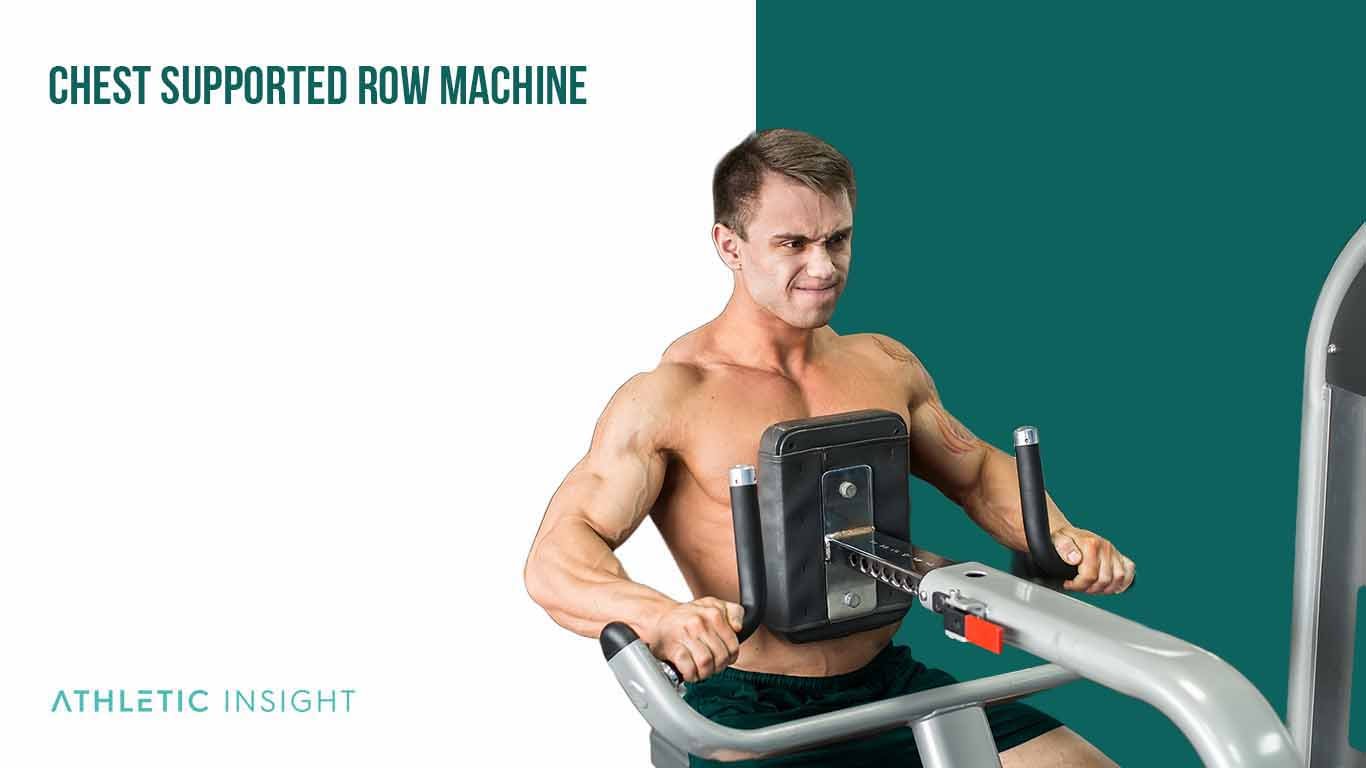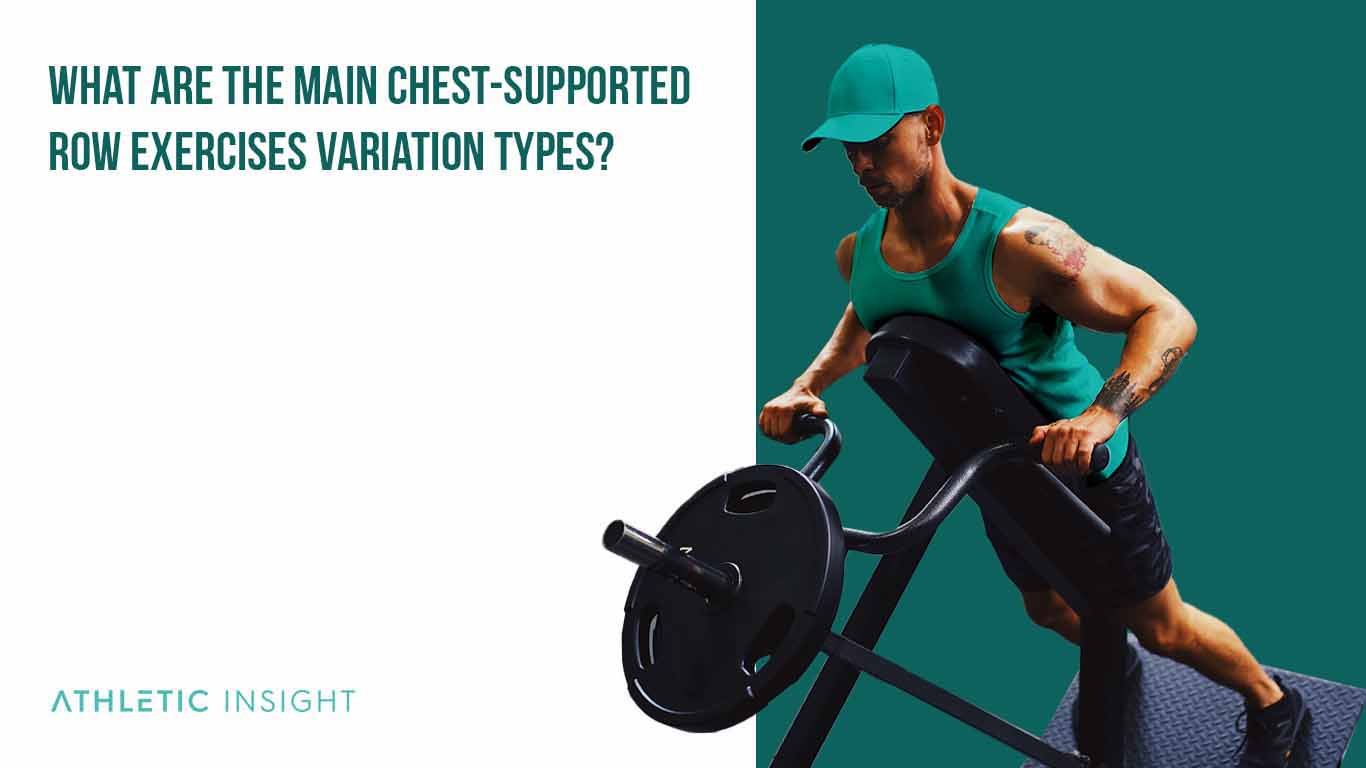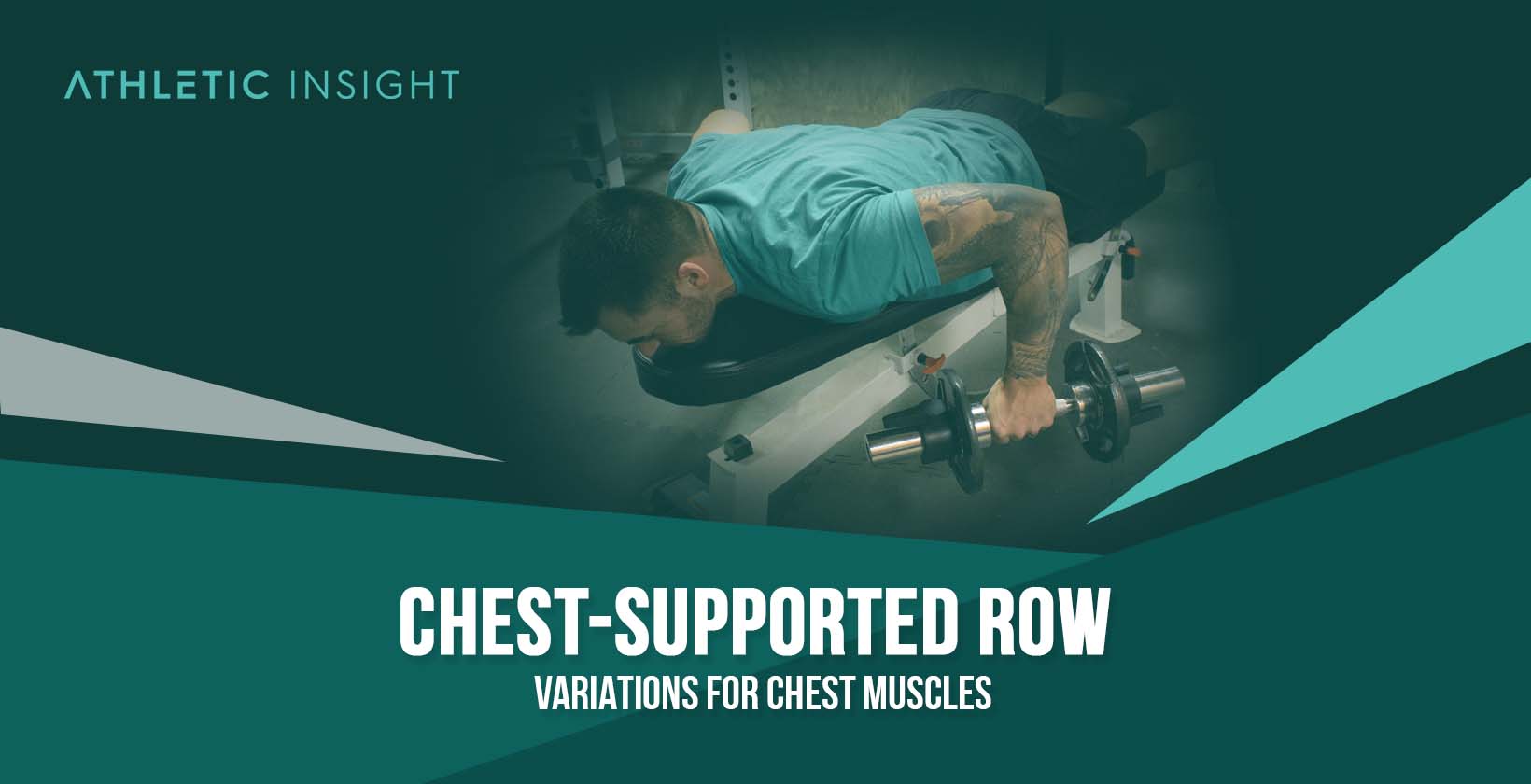The chest-supported row variation is a weightlifting movement that focuses on the latissimus dorsi, trapezius, rhomboids, and biceps, similar to the standard chest-supported row. These variations allow for weightlifters to isolate muscles more so than the traditional chest-supported row.
The individual performing the exercise is supported by leaning against an incline bench with the weights hanging down on either arm at the sides. This individual will have their chest supported by the incline bench, ensuring they do not fall forward, and the focus is solely on the latissimus and lower back muscles.
The ratio of which muscles are worked can vary depending on the incline of the bench and the grip on the dumbbells during the movement. This type of exercise is typically used by weightlifters and bodybuilders to supplement other back exercises, such as pull-ups, bent-over barbell rows, bodyweight rows, and single-arm bench rows.
Other weight-related variations can be helpful for single-arm strength and core strength, such as the kneeling bent over row, bodyweight row with a barbell, TRX bodyweight row, bent over two-arm dumbbell row, barbell row, and weighted pull-up.
Beginners who want to do the chest-supported row variation do not have to use their core or another arm to support their body weight. Since the incline bench will support them, this is suitable for beginners and advanced users alike.
1. Single-Arm Chest-Supported Row
The single-arm chest-supported row variation focuses on the latissimus dorsi, rhomboids, and bicep muscles and is a good choice for an athlete. Since this uses the single side of the body, it can tax the core and stabilizer muscles more than using two dumbbells.
The muscles taxed with the single-arm chest-supported row are the latissimus dorsi, rhomboids, biceps, and trapezius on one side of the body, along with some slight core activation. Some alternatives to the single-arm chest-supported row are the single-arm bent-over row and plank position single-arm dumbbell row.
One mistake people need to avoid while doing this exercise is leaning with their bodies. Two tips to keep in mind during this exercise are keeping your body level on the bench and keeping your elbow close to the side of your body during the pulling motion. The toughness level of this exercise is 6 out of 10 since it is slightly harder to keep your body steady during this movement.
2. Alternating Chest-Supported Row
The alternating chest-supported row is a chest-supported row variation that focuses on the latissimus dorsi, rhomboids, trapezius, and biceps brachii muscles. This exercise is a good choice for bodybuilders and weightlifters who need to balance out both sides of their bodies.
Some alternatives to the alternating chest-supported row are alternating plank dumbbell row, barbell two-arm row, and single-arm lat pulldown. A mistake that many may make during this exercise is leaning their bodies and using momentum. Those performing the exercise need to keep in mind to keep their chest flat on the incline bench and keep their elbows tight to their body.
The toughness of this exercise is a 6 out of 10 since it is more complex than doing two weights simultaneously. Although the chest is supported during this exercise which does not place any strain on the core, the alternating weights make it harder to control.
3. Chest-Supported Barbell Row
The chest-supported barbell row is a chest-supported row variation that taxes the latissimus dorsi, rhomboids, trapeziums, and biceps brachii. Since this version uses a barbell instead of two dumbbells, it can require more grip strength and level strength between the two sides of your body more so than dumbbells. This exercise is suitable for bodybuilders and weightlifters who want to build a bigger back.
Alternatives to the chest-supported barbell row are a chest-supported dumbbell row, bent over barbell row, lat pulldown, pull-ups, or cable upright row. One mistake that people need to avoid during this exercise is pulling unevenly with both arms. Those involved in the exercise should keep in mind to keep their chest firmly against the incline bench and to go through a full range of motion.
The toughness of this exercise is 6 out of 10 since it requires even pulling with both arms to keep the barbell steady. The barbell is prone to being unbalanced if the person does not move their arms evenly, requiring even activation on both sides of the body to raise and lower the barbell in tandem.
4. Chest Supported Row Machine
The chest supported row machine is a chest-supported row variation that taxes the latissimus dorsi, rhomboids, trapezius, and biceps. Beginners can use this rowing machine to build their back muscles without worrying about controlling free weights. This variation is a good choice for bodybuilders and weightlifters who want to focus on their back muscles and may have a limited range of motion or feel uncomfortable using the barbell or dumbbells.

Some alternatives to the chest-supported row machine are the chest-supported dumbbell row, chest-supported barbell row, and lat pulldown machine. One mistake that an individual may make with this exercise is not keeping their chest against the support. The person performing the exercise can fix this mistake but keep in mind two things: go through a full range of motion and not use momentum during the movement.
This exercise is rated as a 3 out of 10 on the toughness scale, as users have chest support and the weight is on a machine track, which helps them keep control during the entire motion.
5. Chest Supported Rear Delt Row
The chest supported rear delt row is a chest-supported row variation that focuses on the deltoids, trapezius, biceps, rhomboids, and forearms. This exercise focuses primarily on the deltoids, whereas the chest-supported row focuses on the back muscles. This exercise may be a good choice for athletes who need to fix their posture or weightlifters who need to build their deltoid muscles.

Some alternatives to this exercise that focus on the deltoids are the rear delt fly, chest supported rear delt fly, bent overfly, and rear delt fly machine. A mistake that some people may make during this exercise is bringing their chest off the bench. That is why those performing the exercise will need to focus on keeping their elbows up high during this exercise and keeping their head level with their body during the movement.
This exercise is rated as a 4 out of 10 on difficulty because the chest is supported, and the user can get a good workout with lighter weights.
6. Alternating Chest-Supported Dumbbell Row with Iso Hold
The alternating chest-supported dumbbell row with iso hold is a chest-supported row variation that works the rhomboids, upper back, trapezius, and deltoids. The iso hold focuses on form and function more than building muscles, ensuring proper posture and form during the movement. This exercise is a good choice for athletes and bodybuilders alike.
Alternatives to this exercise include the chest-supported dumbbell row with iso hold simultaneously, chest-supported dumbbell row, chest-supported barbell row, and bent-over dumbbell row with iso hold. A mistake that some may make during this exercise is letting their elbows flare out.
Some can prevent this mistake from happening by going through a full range of motion and keeping their head on the support at all times. The toughness level of this exercise is a 6 out of 10 since the iso hold takes proper form and breathing.
What are the main Chest-Supported Row Exercises Variation Types?
The main chest-supported row exercise variation types are the incline dumbbell row, dumbbell chest supported row, chest rows, and incline bench row. Numerous chest-supported row exercise variation types are suitable for beginners and advanced weightlifters, bodybuilders, and athletes. Individuals must research the best chest-supported row exercise that works well for their needs.

Which type of Chest-Supported Row Variation is beginner-friendly?
The best chest-supported row variation for beginners is the dumbbell incline row, DB chest supported row, chest support row, and machines. Beginners need to focus on using machines, lighter weights, and supported movements that do not require full-body posture and activation.
Which type of Chest-Supported Row Variation is good for weightlifters?
Weightlifters will benefit the most from the barbell row, incline dumbbell row with iso hold, and chest supported row. Weightlifters need to focus on building full-body strength and power for their lift.
Which type of Chest-Supported Row Variation is good for athletes?
Athletes should consider using the dumbbell incline row to build strength equally on both sides of their bodies.
Which type of Chest-Supported Row Variation is good for bodybuilders?
Bodybuilders will benefit from the exercise that builds their upper back and lower back for more size, such as the inclined row dumbbell hold and incline bench row.
What muscles work for Chest-Supported Row?
The main muscles worked in the chest supported row are the latissimus dorsi, biceps brachii, rhomboids, and trapezius.
Which type of Chest-Supported Row Variation is difficult to perform?
The most difficult chest-supported row variations that are hard to perform include single-arm movement and barbell exercises. The use of free weights and isolation exercises increases the overall difficulty to master, leaving more room for mistakes to happen.
What are the Alternatives of Chest-Supported Row Exercises?
The best alternatives to the chest-supported row exercises include the incline dumbbell row, chest supported row, dumbbell incline row, DB chest supported row, and chest assisted row.



